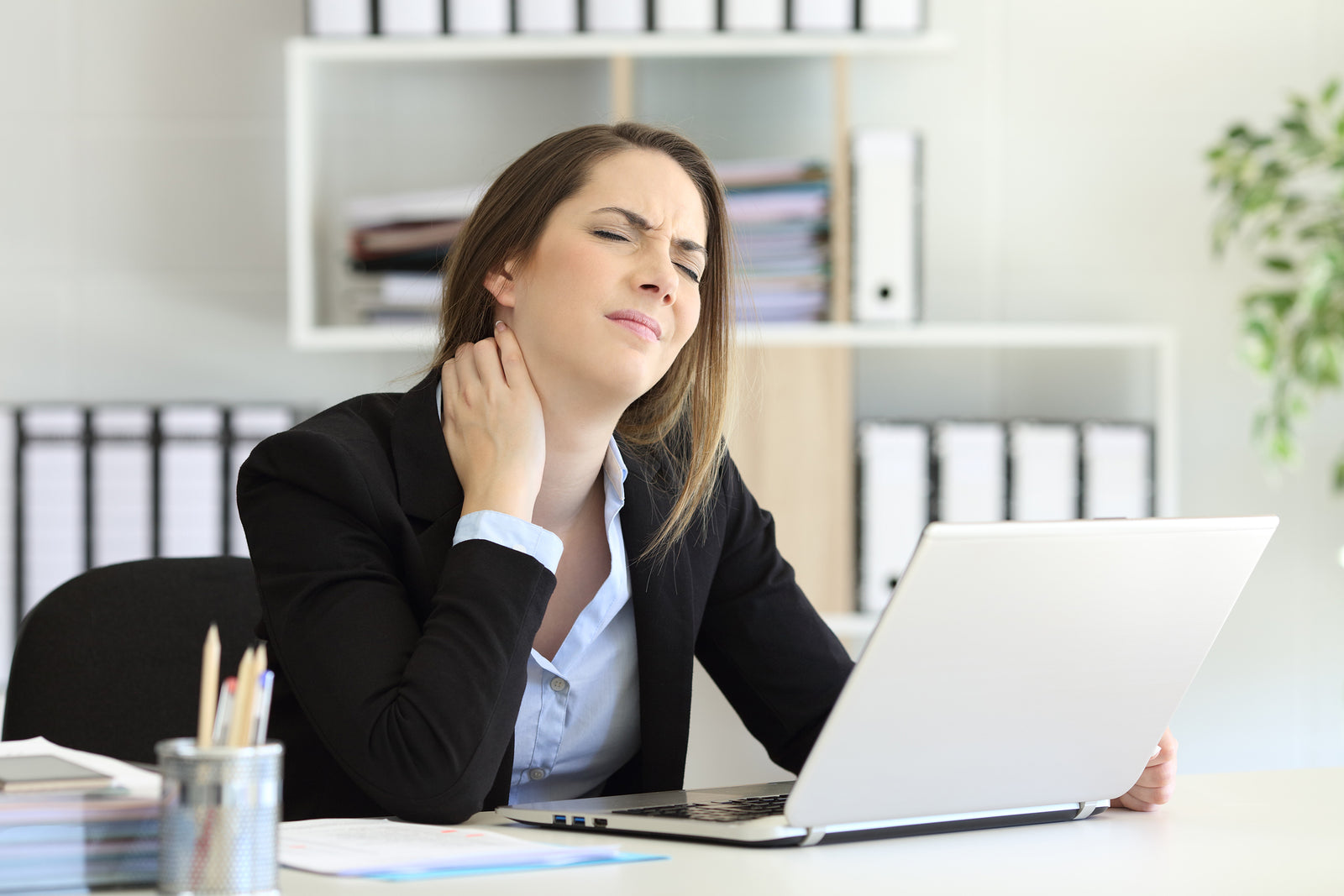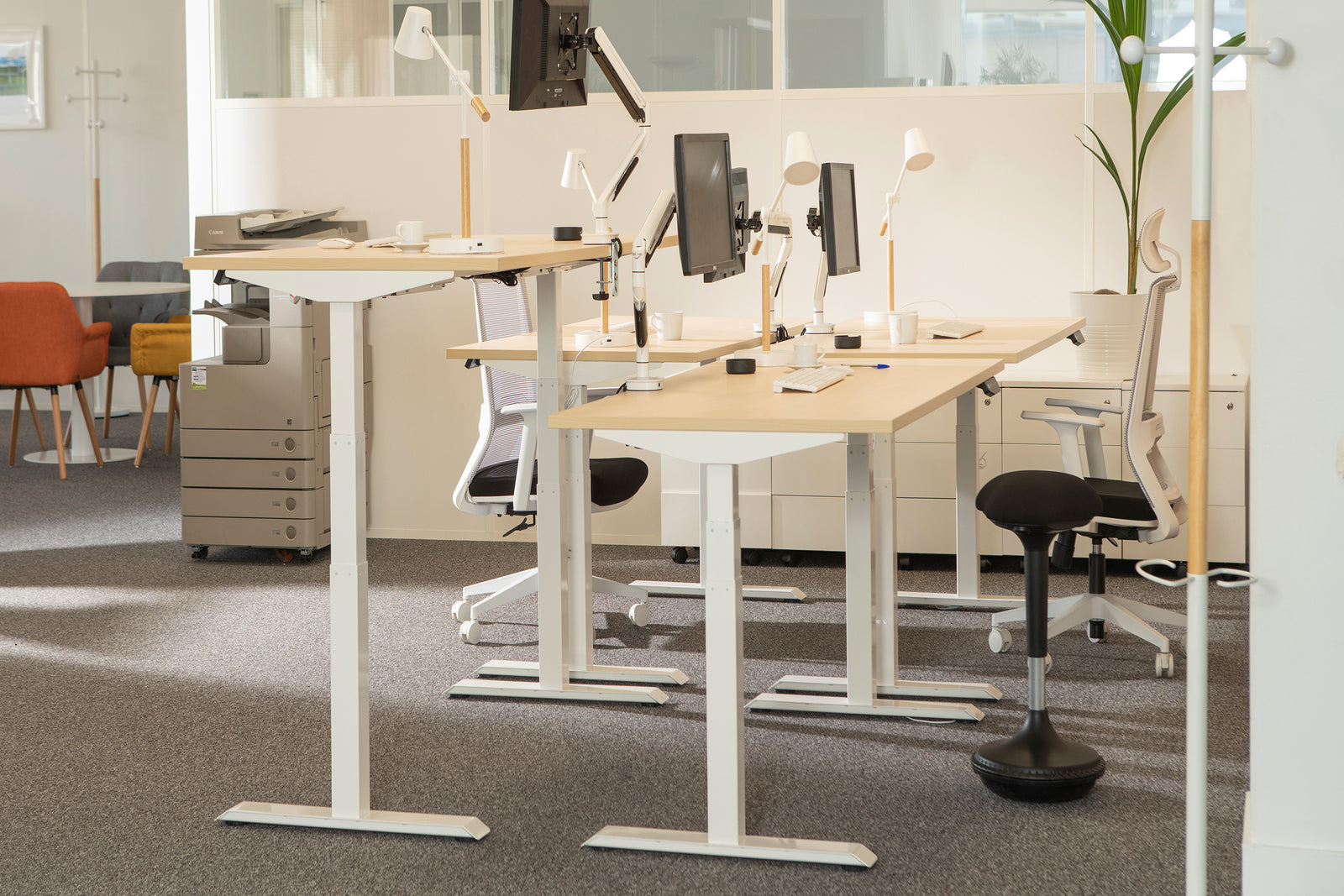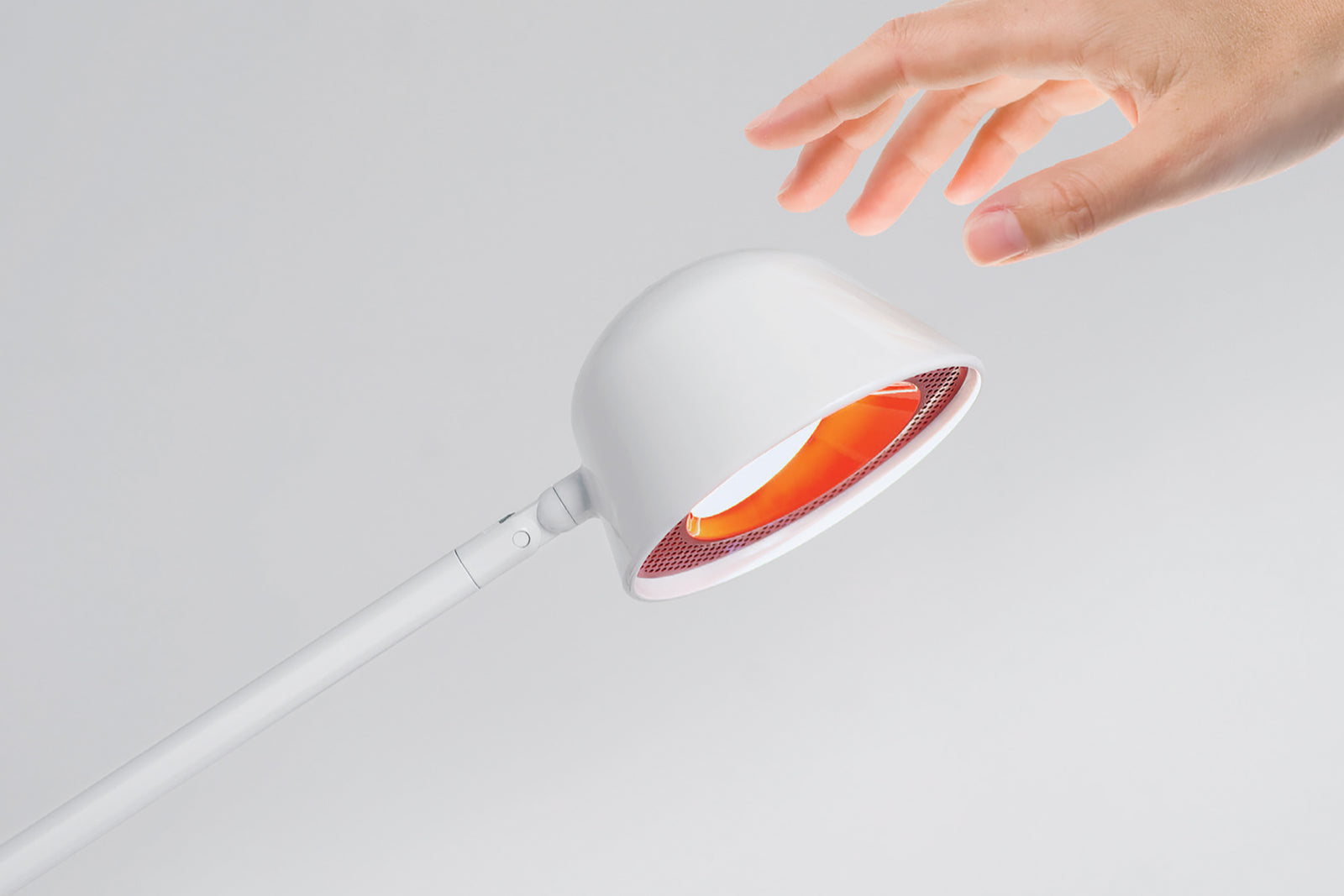Neck pain is defined by pain felt in the cervical region , from the upper back to the neck. This pain generally subsides within a few days or even weeks. Very often neck pain does not cause serious consequences.
Neck pain is often associated with:
- sleep due to poor posture
- poor posture during prolonged computer use
- the tensioning of a muscle in the upper body, caused by poor posture.
What are the different types of neck pain?
Depending on their cause, there are 3 main types of neck pain :
- common neck pain
- neck pain linked to cervical trauma
- symptomatic neck pain.
So-called “common” neck pain is also described as “non-specific”. Their frequency in the population is estimated at 12 people out of 1000 per year.
2/3 of French people are affected at least once in their life by a painful episode occurring in the absence of illness or traumatic context and leading to local stiffness.
Various factors such as anxiety , osteoarthritis , poor posture or even professional or sporting activity can be responsible. We distinguish within this type of neck pain , 3 cases:
- Neck pain in young people which is caused by poor posture, particularly prolonged flexion during work or leisure. They result in pain at the back of the neck radiating to the middle of the back and shoulders, without blocking the neck;
- Those of the elderly are located lower and often linked to cervical osteoarthritis. Neck mobility is reduced and frequently painful;
- Torticollis results in contracture of one or more cervical muscles. It generally begins at night and suddenly, for example following a sudden movement or a bad position taken while sleeping. The pain is severe with an abnormal attitude of the head and neck as if blocked in flexion and rotation.
Neck pain in the workplace
Each year, neck pain (or neck pain) affects 15 to 57% of office workers working on a screen. Nowadays we spend almost 7 hours sitting at our desk in front of a screen and most of the time, this screen is fixed and does not allow for adjustment in height and depth.
Neck pain is the second most common occupational disease at work behind low back pain. But anxiety and stress at work (relationship problems between colleagues, pressure from the hierarchy, workload, etc.) can also lead to the development of neck pain, through tension in the muscles of the neck.
H2: What are the symptoms of neck pain?
There are different conditions and symptoms associated with neck pain. The general clinical signs are:
- Pain in the neck
- Nervous disorders, leading to difficulty performing certain movements
- Possibly unexplainable weight loss
- A feverish state
- Symptoms, such as persistent tingling in the hands or legs, significant muscle weakness or even regular imbalances, require consultation with the doctor as quickly as possible.
What treatment for neck pain?
To relieve the pain associated with acute neck pain , the doctor prescribes analgesics (medications to combat pain): paracetamol or NSAIDs (non-steroidal anti-inflammatories). Muscle relaxants can be prescribed in the event of painful muscle contractures.
A foam cervical collar can be useful at the start of neck pain when the pain is most intense.
Finally, it is sometimes necessary to resort to physiotherapy* sessions, during which several techniques can be used:
- electrotherapy (use of ultrasound and infrared),
- spinal tractions,
- mobilization techniques (active or passive),
- contract-release techniques,
- massage or certain manipulations of the cervical vertebrae (contraindicated within 6 weeks following trauma).
A work stoppage (3 to 15 days on average) may be necessary in certain situations. It is up to the doctor to decide whether to put the patient to rest. It is taken on several criteria, depending on:
- The nature of the work, in particular, when the professional activity carried out is physical (repeated neck flexion-extension movements, carrying heavy loads, etc.)
- The age and physical condition of the patient
- The intensity of pain and its response to treatment
- Duration and conditions of transport
When the patient carries out a sedentary activity, an ergonomic adaptation of the workstation can be considered.
* Beyond 15 rehabilitation sessions for an episode of “common” acute neck pain, the prior agreement of the Health Insurance medical advisor is necessary before continuing rehabilitation. This agreement is also necessary from the 31st session , if 30 sessions for common neck pain have been treated in the previous 12 months.
5- How to prevent neck pain in the workplace?
It is possible to prevent neck pain with a few simple changes in habits. Therefore, it is advisable to maintain your cervical muscles through small exercises learned with the physiotherapist and performed 2 to 3 times a week. It is also necessary to avoid chronic stress and anxiety . To do this, relaxation techniques can help limit these states of stress.
It is also recommended to adapt your position to the activity carried out within the framework of your work. So in front of a screen, the appropriate posture is:
- Feet flat on the floor or a footrest
- Right elbow angle or a little bigger
- Forearms close to the body
- Hand in line with forearms
- Back straight or slightly back and resting on the backrest
- Take regular breaks to limit tension on the back and neck
But the most effective way to prevent neck pain is to provide company employees with screen arm supports that allow them to adjust the height and depth of their screens. Your eyes must be aligned with the top edge of the screen.
6-UNILUX solutions to prevent neck pain
ERGO ONE and ERGO TWIN: ERGO ONE single screen arm support and ERGO TWIN double screen arm support
Benefits :
- Health and well-being : These easy-to-use ergonomic arms improve your posture and relieve your cervical vertebrae by adjusting the screen to a distance, height and angles according to your needs. Our multi-directional screen arm supports (horizontal/vertical display) are equipped with a gas spring, they adjust effortlessly and hold your screens at the perfect viewing angle.
- Performance at work : using this screen support arm will declutter your workspace and energize your work by promoting collaborative work.
- The + product : equipped with 2 USB 3.0 ports, easy to access the base, ideal for sharing data from a USB key and for charging your devices such as smartphones and tablets.
Missing photos
ERGO STATION : Ergonomic storage gantry
Benefits :
- Health and well-being: composed of an ergonomic screen support arm, easy to use, it improves your posture and relieves your cervical vertebrae thanks to the adjustment of the screen to a distance, height and angles depending on of your needs.
- A structured desk: this versatile ergonomic desk organizer has various storage spaces such as a vertical A4 holder, a slot for the mobile phone and a pot for storing pens. The space thus freed up on your desk helps to provide you with better organization in your work.
- Flexibility: Equipped with a gas spring, it adjusts effortlessly and holds your screen at the perfect viewing angle. It is capable of rotating 360° for a landscape or portrait view, tilting and is easily extendable in height to 45 cm max. and forwards to 42 cm max.
- The + product: with a maximum length of 125 cm and thanks to its two robust vice-type desk clamps to attach behind the desk, it will easily adapt to any type of desk 140 – 160 – 180 cm wide.



